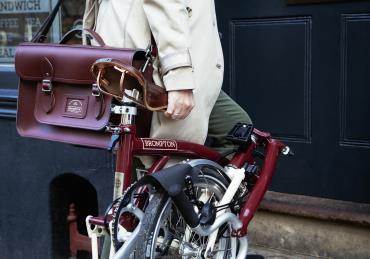Focus on one of the world's healthiest cities: Copenhagen
Go for a wander in Copenhagen, and you’ll likely find yourself next to one of hundreds of cycle lanes that lie parallel with the pedestrianized pavement. Cycling accounts for 16% of all trips in Denmark[1] and 49% of all trips to work or education in the capital[2]. Nine out of ten Danes own a bicycle[3] and in the capital 26% of all Copenhagen families with two children own a cargo bike[4].
“Cycling infrastructure has been developing in Copenhagen for over 100 years. The first cycle path was installed in 1892 – when cyclists were sharing the roads with horses rather than cars,” says Klaus Bondam, director of the Danish Cyclists’ Federation and a former Mayor for Technical and Environmental Affairs in Copenhagen. Parallels are often drawn between the Danish and Dutch cycling cultures, however, compared to Copenhagen’s cycling history, progress in Amsterdam has been much more rapid, driven initially by the Stop de Kindermoord protests in the 1970’s. What is clear when looking at both cities though, is that in order to create and sustain a systemic cycling culture, progress must be driven at all levels of society.
The cycling culture evident in a number of European cities has had wide-reaching effects, beyond a healthy network of cycle lanes. Copenhagen is now considered to be one of the world’s healthiest cities. It’s also one of the world’s happiest – consistently coming in first place on the UN’s happiness index.
The health and economic benefits of this regular exercise are considerable – as shown in the findings of the Cycling Report for the Capital Region 2016, which noted ‘cycling results in over a million fewer sick days a year in the capital alone.’
The latest figures from The Cycling Embassy of Denmark note that every kilometer cycled in Copenhagen adds 16p to the public purse through savings on things such as transport costs and healthcare. Conversely, every kilometer driven costs the state 65p[5].
“Copenhagen’s position as a healthy city is the result of generations of political commitment,” says Bondam. “But it’s a mistake to believe that we were never close to moving in a different direction. Back in the late sixties there were plans to build an enormous highway across the city’s lakes. Luckily, despite garnering support, our politicians decided not to do so, and this was an important confirmation of our values in the city.”
Exercise is a way of life across Scandinavia – and Copenhagen is a prime example of an urban environment that fights for what it believes in and promotes a more active form of transport.
Find out more about our Campaign for Movement here.












